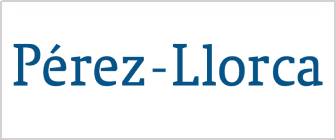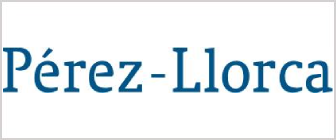I. Introduction
The applicability of the reduced VAT rate to urban rehabilitation works, under item 2.23 of List I annexed to the Portuguese VAT Code (“Item 2.23”), has long been the subject of legal debate.
Prior to October 7 2023, the existing legal framework raised considerable uncertainty regarding the conditions under which the reduced rate could be applied. In particular, two issues were frequently debated: (i) whether the mere inclusion of a property within an Urban Rehabilitation Area (“ARU”) was sufficient to trigger the reduced rate or, whether it was also necessary for the works to be carried out within the scope of a formally approved Urban Rehabilitation Operation (“ORU”) – an issue recently clarified by a decision to unify case law (the “Decision”) of the Portuguese Supreme Administrative Court (“STA”) – and (ii) whether the reduced rate could be applied to new construction works undertaken within these areas.
This legislative framework had already undergone significant reform with the entry into force of Law No. 56/2023, of October 6 (commonly referred to as the “Mais Habitação Law”).
This article provides an overview of the legal regime applicable prior to the Mais Habitação Law, the interpretative guidance provided by the STA, and the key amendments introduced by the new legislative framework.
II. Legal Framework
a) Regime prior to October 7 2023
As per the wording of Item 2.23, prior to its amendment by the Mais Habitação Law, the reduced VAT rate of 6% was applicable to:
“Urban rehabilitation works, as defined in specific legislation, carried out on real estate or public spaces located within urban rehabilitation areas (critical areas for urban recovery and redevelopment, intervention zones of urban rehabilitation companies, and others) as legally designated (…)”
For several years, legal uncertainty persisted as to whether the mere inclusion of the property within a designated ARU was sufficient, or whether a formal ORU, duly approved and in force, was also required. This interpretative ambiguity gave rise to significant litigation between taxpayers and the Portuguese Tax Authorities (“PTA”), with judicial and arbitral decisions being handed down in both directions.
This long-standing debate was settled by the STA through the Decision issued in Case no. 012/24.9BALSB , dated 26 March 2025. In the Decision, the STA clarified that the application of the reduced VAT rate was not triggered merely by the location of the works within an ARU. Rather, it also required the cumulative existence of an approved ORU in force at the time the works were carried out. The STA reasoned that the legal reference to “urban rehabilitation works, as defined in specific legislation” must be interpreted in light of the procedural framework established in the Urban Rehabilitation Legal Framework – as approved by Decree-Law no. 307/2009, of 23 October, as amended. In practical terms, this means that the reduced VAT rate applies exclusively to works carried out on properties located within an ARU for which a strategic planning instrument - that is, a formally approved ORU, whether simple or systematic - has been adopted by the municipality.
A separate debate arose concerning the eligibility of new constructions under Item 2.23. In practice, it has generally been accepted that the concept of urban rehabilitation works could encompass certain new construction activities, as confirmed, for example, in the arbitral decisions in cases no. 404/2022-T and 354/2023-T.
b) New regime introduced as of October 7 2023 (Mais Habitação)
The Mais Habitação Law entered into force on October 7 2023, substantially revising the wording and scope of Item 2.23. The provision now applies to:
“Building rehabilitation works and construction or rehabilitation of public-use facilities works located in urban rehabilitation areas (critical areas for urban recovery and redevelopment, areas of intervention by urban rehabilitation companies, and others) as legally designated (…)”
Under the new legal framework, the reduced VAT rate will only apply when all of the following conditions are met:
i. Existence of a works contract: A formal contract for the execution of the rehabilitation works must be in place;
ii. Qualification as building rehabilitation: The works must qualify as “building rehabilitation”, defined as interventions aimed at ensuring that one or more buildings (including ancillary constructions and independent units) meet adequate standards of structural, functional, or constructional performance and safety, or providing them with new functionalities aligned with urban rehabilitation objectives. These works must enable the building’s continued or renewed use under improved performance conditions. Importantly, the definition may encompass one or more urban development operations; and
iii. Location within an ARU: The property subject to the intervention must be located within an ARU.
The PTA have already clarified in Circular Letter No. 25003, dated October 30 2023, that, under this new framework, Item 2.23 does not apply to projects involving the construction of entirely new buildings. Moreover, the applicability of the reduced VAT rate is no longer dependent on the existence of an approved ORU.
c) Transitional rule
Notwithstanding the above, the Mais Habitação Law introduced a transitional provision ensuring the continued application of the former regime in specific circumstances. In particular, the previous wording of Item 2.23 will continue to apply to:
- Urban planning applications (including licensing requests, prior communications, or prior information requests) submitted to the competent municipal authority prior to October 7 2023; and
- Licensing requests or prior communications submitted after October 7 2023, provided that they are based on a favorable prior information request that remained valid at the time of submission.
Accordingly, for all other situations not covered by the transitional provision - namely, urban planning applications submitted after October 7 2023, and licensing requests and prior communications submitted after that date, provided they are not based on a favorable prior information request still valid on the submission date - the revised legal framework introduced by Mais Habitação Law still applies.
III. Final remarks
Under the legal framework in place until October 2023 (including transitional provisions), the reduced VAT rate applied to “urban rehabilitation works,” which could include certain new construction. However, a recent Decision by the STA clarified that eligibility for the reduced rate required not only that the works be carried out within an ARU, but also that they fall under an approved ORU.
This strict interpretation has significant implications for ongoing tax disputes, particularly in cases where the lack of an approved ORU was due to delays by local authorities. Although the decisions to unify case law are not legally binding, they generally guide court decisions and are likely to entrench a more restrictive approach. Still, this interpretation could be overturned: a request for annulment has been submitted and further appeals to the Constitutional Court are expected.
A major shift occurred with the entry into force of the Mais Habitação Law on 7 October 2023. The reform eliminated the formal requirement for an approved ORU but introduced a stricter substantive condition: only works that clearly qualify as “building rehabilitation” are now eligible for the reduced VAT rate, explicitly excluding all new construction.
This exclusion of new construction, although clarifying the scope of eligibility, has significantly limited the practical application of the reduced rate, thereby creating considerable uncertainty in the real estate and construction sectors, disrupting project planning, increasing costs, and delaying investment decisions. In response, the Government – under its broader housing policy – has announced plans to propose extending the reduced VAT rate to include the construction of affordable housing. This measure is intended to support market stability and help expand the supply of housing.


